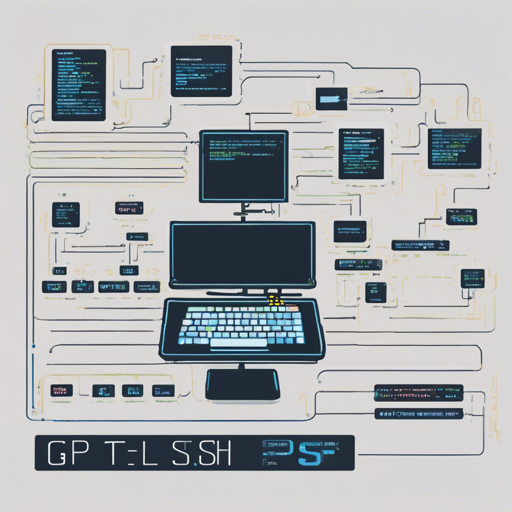Welcome to the exciting world of gptsh! This cross-platform command-line interface (CLI) tool, built with NodeJS and powered by OpenAI’s GPT-3, translates your natural language questions into shell commands. If you’ve ever found yourself wrestling with complex terminal commands, gptsh is here to make your life easier. Let’s explore how to install and use this powerful tool!
1. Installation
You can install gptsh in a few simple steps using either NPM or Yarn, or by utilizing Docker.
- Using **npm**:
npm install --global gptshyarn global add gptshdocker run --rm -e OPENAI_SECRET_KEY shorwoodgptsh inputFor convenience, you can also create an alias for quick access:
alias gptsh='docker run --rm -e OPENAI_SECRET_KEY shorwoodgptsh'2. Getting Started
Before diving in, make sure to set your OpenAI API key. You can do this in three different ways:
- As an environment variable:
OPENAI_SECRET_KEY=YOUR_SECRET_KEYgptsh input --secret YOUR_SECRET_KEY~/.gptshrc:secret=sk-XckwVRipQyM9nr1M8jVGGBUvDGIqwVmsbcrznkwz3. Usage
The magic happens with the command:
gptsh input [options]Here are some options you can use:
--version– Show version number-s, --secret– OpenAI API key for authentication-e, --engine– Specify which engine to use-t, --tokens– Max number of tokens to consume--temperature– Higher values lead to more adventurous outputs-p, --platform– Define the platform for the output command-n– Number of completions to generate--help– Show help options
4. Examples
Here are a few examples to get you started:
$ gptsh install node 12 repository$ gptsh add yarn bin folder to path on zsh$ gptsh List all files of this directory$ gptsh Install the lodash package using yarn --secret YOUR_SECRET_KEY5. Troubleshooting
If you encounter any issues while using gptsh, here are a few troubleshooting tips:
- Ensure you have a valid OpenAI API key and it’s set correctly.
- Make sure NPM/Yarn/Docker is installed on your machine and they’ve been set up correctly.
- Check that your commands are syntactically correct.
For more insights, updates, or to collaborate on AI development projects, stay connected with fxis.ai.
6. Join the gptsh Community
Contributions are welcome! If you have ideas for major changes, please open an issue on GitHub to discuss your proposals.
Conclusion
At fxis.ai, we believe that such advancements are crucial for the future of AI, as they enable more comprehensive and effective solutions. Our team is continually exploring new methodologies to push the envelope in artificial intelligence, ensuring that our clients benefit from the latest technological innovations.
Now, go ahead, install gptsh and let it simplify your command line experience!

